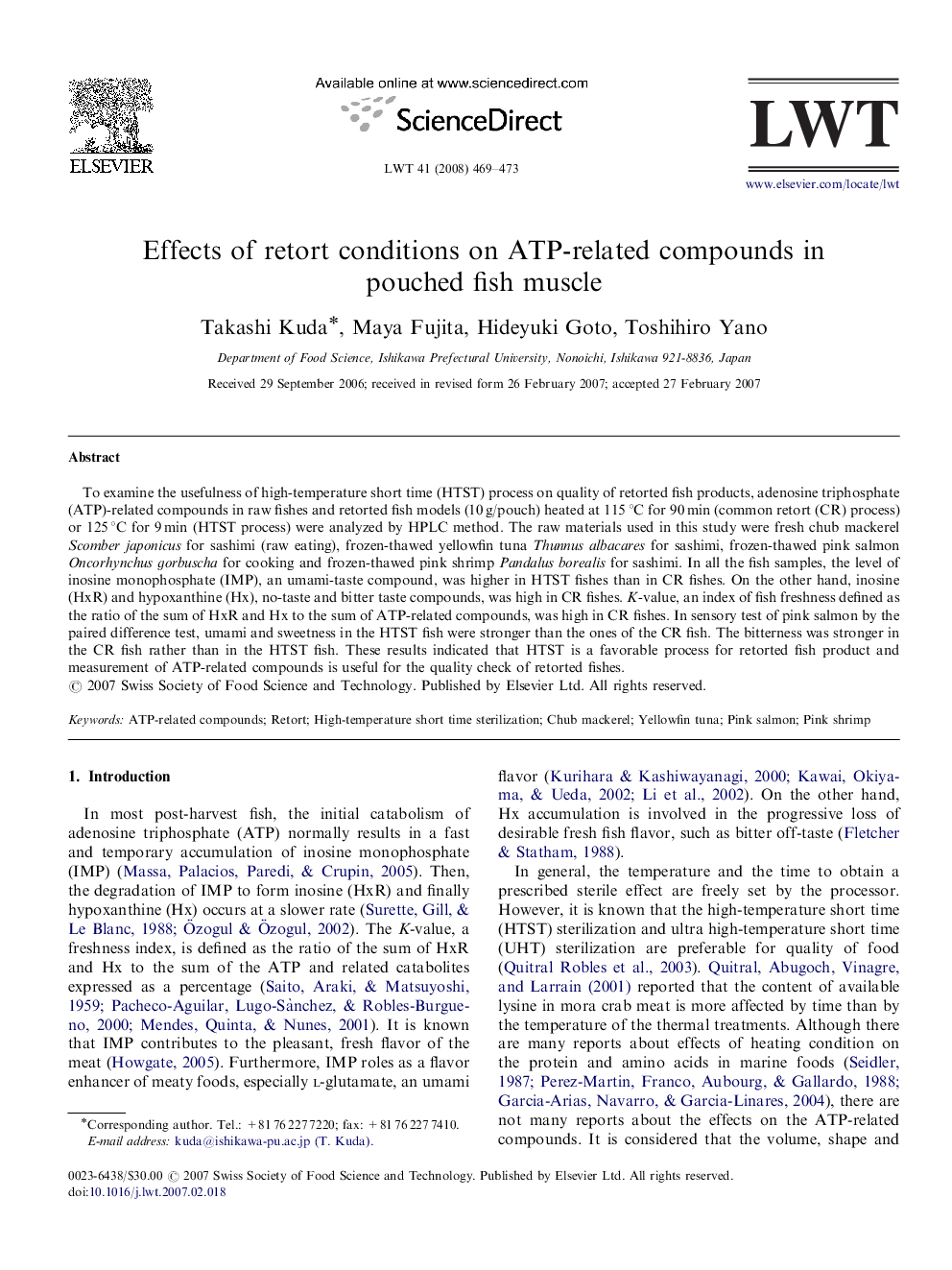| Article ID | Journal | Published Year | Pages | File Type |
|---|---|---|---|---|
| 4564836 | LWT - Food Science and Technology | 2008 | 5 Pages |
To examine the usefulness of high-temperature short time (HTST) process on quality of retorted fish products, adenosine triphosphate (ATP)-related compounds in raw fishes and retorted fish models (10 g/pouch) heated at 115 °C for 90 min (common retort (CR) process) or 125 °C for 9 min (HTST process) were analyzed by HPLC method. The raw materials used in this study were fresh chub mackerel Scomber japonicus for sashimi (raw eating), frozen-thawed yellowfin tuna Thunnus albacares for sashimi, frozen-thawed pink salmon Oncorhynchus gorbuscha for cooking and frozen-thawed pink shrimp Pandalus borealis for sashimi. In all the fish samples, the level of inosine monophosphate (IMP), an umami-taste compound, was higher in HTST fishes than in CR fishes. On the other hand, inosine (HxR) and hypoxanthine (Hx), no-taste and bitter taste compounds, was high in CR fishes. KK-value, an index of fish freshness defined as the ratio of the sum of HxR and Hx to the sum of ATP-related compounds, was high in CR fishes. In sensory test of pink salmon by the paired difference test, umami and sweetness in the HTST fish were stronger than the ones of the CR fish. The bitterness was stronger in the CR fish rather than in the HTST fish. These results indicated that HTST is a favorable process for retorted fish product and measurement of ATP-related compounds is useful for the quality check of retorted fishes.
